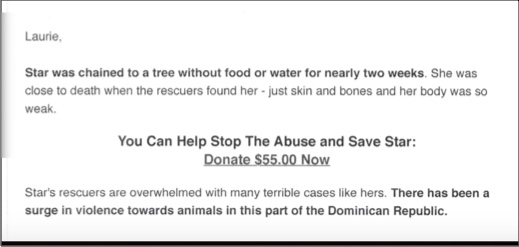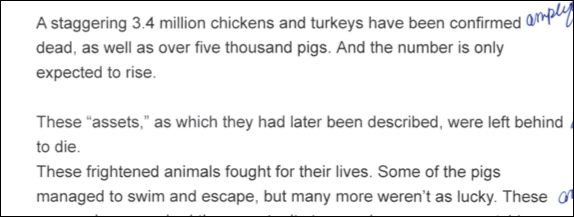
Little Boy Lost
MOST NONPROFITS DON’T EVEN KNOW THEY NEED HELP
Why is it that when I ask most nonprofits if they need any help with their online fundraising copy, they say no. They are in good shape.
Is it because they can’t afford the costs to hire a writer?
Then they may want to pay close attention to what I have to say.
Because their email appeals, petitions, and landing pages need help.
THE GURUS OF NONPROFIT COPYWRITING
Thomas Ahern and Jeff Brooks, two experts in the field of nonprofit copywriting, often talk about the need to make fundraising copy easy to read.
But what does that mean?
Both Ahern and Brooks say reading grade level refers to “ease of readability.”
Some writers think this means dumbing-down copy. Not at all.
In his new book:
IF ONLY YOU’D KNOWN…YOU WOULD HAVE RAISED SO MUCH MORE: AIRTIGHT ANSWERS TO 40 FUNDRAISING QUESTIONS ESSENTIAL TO YOUR FUNDRAISING SUCCESS (https://www.emersonandchurch.com/products/if-only-youd-known-you-would-have-raised-so-much-more)
Thomas Ahern says:
Grade level, as measured by the standard Flesh-Kincaid
readability scoring system, has nothing to do with your
intelligence or how far you went in school.
The system scores just one thing
How quickly my brain can move through your prose. (p. 63)
These scoring systems are looking at two things when they rate written material:
- how many words are in a sentence and
- how many syllables are in each word
I could tell you how a computer creates a “grade level” from looking at these two things, but that’s not really important.
What matters is that the best results are gained when the fundraising copy has a 4th to 6th grade reading level.
And testing has proven it. Over and over again.
But don’t take my word for it.
See Jeff Brooks’ s book : THE FUNDRAISER’S GUIDE TO IRRESISTIBLE COMMUNICATIONS (REAL-WORLD) FIELD-TESTED STRATEGIES FOR RAISING MORE MONEY. (https://www.futurefundraisingnow.com/future-fundraising/the-fundraisers-guide-to-irresistible-communications.html)

But why is it more effective?
Because reading requires thinking. And thinking takes work. The easier copy is to read, the less a reader needs to work to understand what it’s saying.
Fundraising professionals say they strive to make their copy easy to read. But the appeals I receive in my inbox don’t reflect it.
EASY PEASY
I could only find ONE fundraising piece in my inbox that tested at a 6th grade reading level.
And here is an excerpt from it:


This email appeal from SPCA International is a good example of “easy-to-read” copy. There is only one 3-syllable word in the first two sentences. Rescuers. And the writer varied sentence length throughout the piece—and used few complex sentences.
Still the message is clear and concise without condescending to any reader.
Most of the copy in my inbox tested at 10th or 11th grade reading levels. A few were 13+.
TOO MUCH WORK REQUIRED
Let’s look at a few pieces so you can see the difference.
The excerpt below was taken from an email appeal from World Animal Protection.

This email rated at a 9th grade reading level.

This appeal is filled with complex sentences. And the sentences are too long.

Now compare my version. The message is much the same.
It’s been several weeks since Hurricane Florence struck.
Life carries on for most people. But not for the animals that were left behind.
Not for the millions of chickens or turkeys found dead after the storm.
Not for the thousands of pigs that tried to escape the rising water.
For them the death toll was high.
My version rated a 6th grade reading level. By using shorter sentences and smaller words, I lowered the reading grade level of this appeal.
Here’s another example of an appeal in need of simplification.
This appeal from The National Wildlife Federation tested at the 12th grade reading level.


The last sentence has 34 words in it.
That’s way more work then most readers want to do.
Here is my version:
“The Arctic National Wildlife Refuge is paradise to a polar bear.
Lots of wild animals call it home. But now that home is in danger.
Big oil and gas companies want to claim it for exploration. All in the name of greed.
No thought for the pregnant bears who live there.
Or for the babies yet to be born.”
My version scored a 5th grade reading level. Yet the message is clear.
SIMPLIFY, SIMPLIFY, SIMPLIFY!
I could show you many more appeals that are hard to read.
But you get the message.
If nonprofits want their emails to get results, then they must make them easier to read.
Donors don’t want to do more work.
They want to help their community. They want to make the world a better place. All while feeling good about themselves.
But they will only help if we make it easy for them to do so.
And that all starts with giving them a clear message.
And in case you were curious, this blog post rated a 6th grade reading level.
